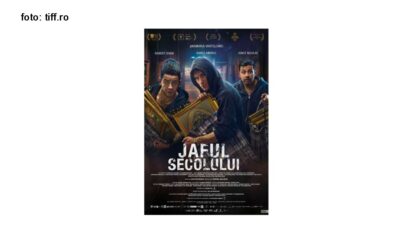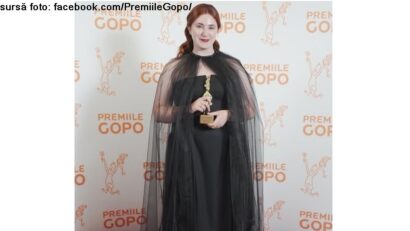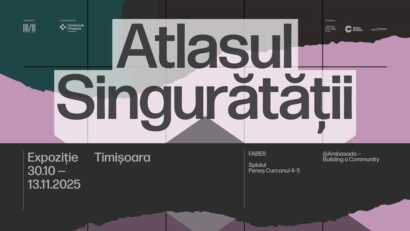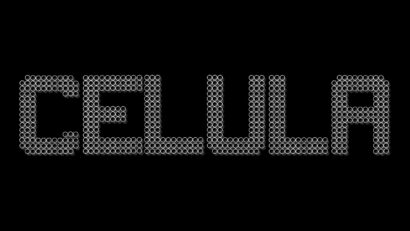Andezit 10, A Sculpture Exhibition
The Simeza Gallery in Bucharest presents in November the traveling group exhibition Andezit 10
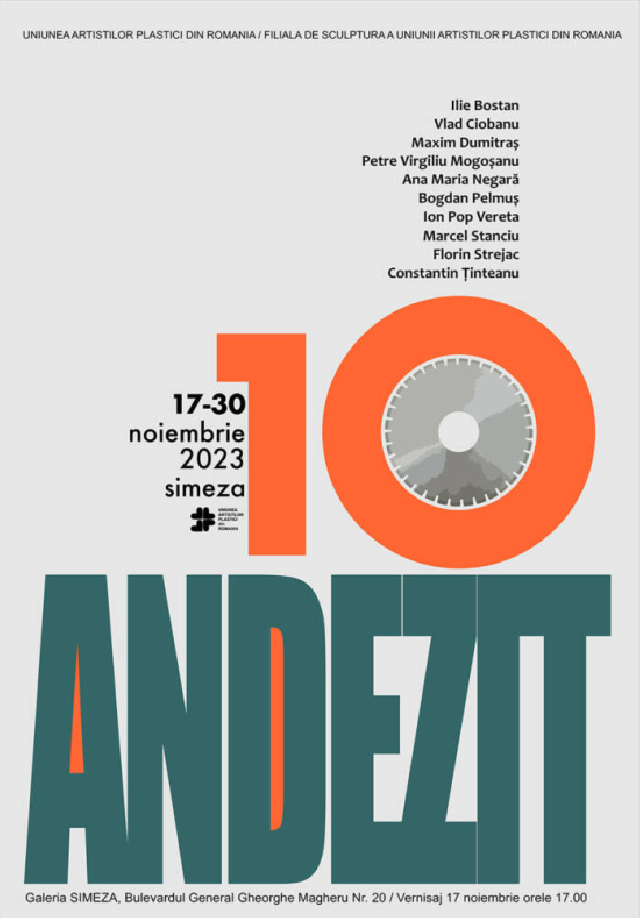
Ion Puican, 02.12.2023, 12:50
The Simeza Gallery in Bucharest presents in November the traveling group exhibition Andezit 10. The exhibition had a route through several galleries in Romania, the exhibition in Bucharest being the end of its journey. 10 established visual artists present works closely related to the Via Transilvanica – The Uniting Road, the long-distance tourist route (on foot, by bike, or on horseback) (1400 kilometers) that crosses Romania diagonally, from the Putna Monastery in Moldova (north-east Romania), to Drobeta-Turnu Severin (south-west Romania). Some kilometer markers of the route are made by artists out of andesite (igneous rock resulting from a volcanic eruption).
At the opening, we spoke with the initiator of the project and one of the exhibiting artists, the sculptor Maxim Dumitraș, about how the exhibition at the Simeza Gallery was born and how the team of creative sculptors of the exhibition was formed:
This exhibition was born from a Via Transilvanica monumental sculpture symposium, where each artist made 5 or 6 milestones. They are all members participating in this symposium. We used andesite as a raw material, and each artist proposed their own projects, which I think will be done in time and will be monumental. I built the team knowing that the artists work in andesite. It is a very hard material, more so than granite. Naturally, you have to have experience with this material, and this is how I selected the artists. We made 6 milestones, as I said, each with one’s own project. This exhibition traveled from the Museum of Comparative Art in Sângeorz-Băi, to Baia Mare, Sighetu Marmației, Bacău, Iași, and now we end a one-year cycle at the Simeza Gallery in Bucharest. We worked on Via Transilvanica, on the hills, after which we exhibited them along the route. We built the exhibition to fit the hall.
Maxim Dumitraș gave us some details about how to work with andesite, a hard and difficult material to process:
It’s a special technique, there are special rotary tools, you can’t play with just any material. It’s tough, but it’s fantastic when the sculpture is finished. I used it for the first time in the sculpture circuit about 10 years ago, a lot of work was also done in symposia. It is a type of stone very resistant to time and weather. And what’s interesting is that you can give it a finish from a rough surface to an ultra-finished surface, close to the level of the glass.
Visual artist Bogdan Pelmus, present in the exhibition with sculpture works, spoke to us about the Andezit 10 project:
I didn’t graduate sculpture school, I graduate painting, actually, but I found it interesting to work with objects. I work with objects, with video, with several media. And I found the material very interesting, because it’s very hard, and you can get the exact opposite out of it. It depends on how you play with it.
We asked what works Bogdan Pelmuș exhibited in the Simeza Gallery exhibition.
There are two pieces, they are called Flight, and two drawings, somehow complementing the idea of duality, search, interior, treasure, childhood. Meaning the way can you maturely bring ideas out of your personal self.
The President of the Union of Fine Artists (UAP), the artist Petru Lucaci, present at the opening, told us:
“It’s wonderful what’s going on here. It is a challenge both for the sculptors and for us to witness such a deployment of force, because we can even speak of force here. Andesite is a very hard kind of rock. I have met the sculptors in symposia, and I was impressed by the kind of effort they make to identify in a stone block an image, an idea, a form, or a message. The works are interesting, the group is at the same time homogeneous, but multiple personalities are identified here, because they are artists with experience in creation camps, and in working with such materials. It is an original material, with an impressive expressive force. We are used to working with white stone, it is a softer, more malleable, easier to master limestone. When it comes to andesite, it’s a terrific challenge, and the effect is absolutely impressive.
Petru Lucaci also talked to us about how he sees this project from a curatorial point of view, the project being curated by the exhibiting artists themselves:
It seems to me that the exhibition makes sense, it is unitary and it has strength, because those who have gathered here know each other, they know each other’s potential, they know the potential of the material they work with, and I think they have found a very good formula for putting their ideas into action.
How did 2023 look from the UFA perspective? What does the Union of Fine Artists prepare for lovers of beauty? Here is president Petru Lucaci:
For now we are trying to take stock of the National Contemporary Art Show, which I say was far-reaching. It took place in 15 different spaces, some of them quite large, those at the Fine Arts Complex, where we have 8 galleries that I think are impressive in size. There are the former warehouses of the complex, which have turned into a cultural hub, probably the biggest in Romania, and where things happen on a different scale than we can manage in the galleries in the city, which certainly have more domestic, more human dimensions . We are preparing another event now, soon. We finished the new building, the headquarters of the Union of Fine Artists, which also has an art gallery on the ground floor. So we are trying to show to the world the exhibition that we organized there in a more official context, that of the inauguration of the Union headquarters. It is the first time that the Union has its own home, which is extremely important.

